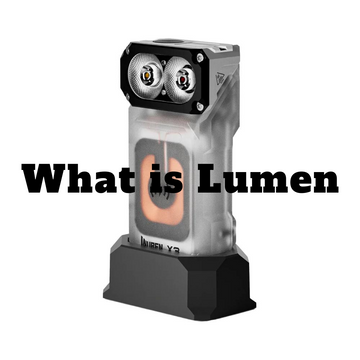
To comprehend lumens fully, let us first unravel the enigma of light itself. Light is an electromagnetic radiation that manifests as waves, enabling it to traverse the vast expanses of our visual perception. The intensity of light is paramount in assessing its brilliance and, in turn, our ability to perceive it.
Measurement of Light Intensity: Lumens
In our pursuit of quantifying light intensity, lumens assume a pivotal role as the go-to unit of measurement. Lumens (lm) represent the total luminous flux emitted by a light source, specifically gauging its visibility to the human eye.Lumens and Watts
In the bygone era, wattage stood as the principal determinant of a bulb's luminosity. However, with the advent of energy-efficient lighting technologies, the lumens-watts relationship has undergone a transformation. Today, lumens have emerged as the key measure of a light source's brightness, with energy-efficient bulbs delivering heightened lumens per watt, striking a harmonious balance between luminosity and energy consumption.Now that we have laid the groundwork, let us delve deeper into the essence of lumens and fathom their significance in the realm of lighting. Lumens, quite simply, quantify the total amount of light emitted by a single light source. They serve as a direct measure of brightness or illumination provided, bestowing upon us the gift of visibility.
Lumens in Different Light Sources: Shedding Light on Brightness
Distinct light sources exhibit varying lumen outputs, shaping their performance and suitability for specific applications. Traditional incandescent bulbs, for instance, typically possess lower lumen outputs compared to their energy-efficient counterparts, such as fluorescent lights and LED lights. This divergence in lumen output translates into disparities in brightness and energy efficiency.Lumens and Energy Efficiency
Energy efficiency stands as a paramount concern in the realm of lighting, and lumens play an instrumental role in determining a light source's efficacy. By judiciously considering lumen output alongside wattage, we can make informed decisions that strike an optimal balance between brightness and energy consumption. Opting for light sources with higher lumen-per-watt ratios empowers us to achieve desired luminosity without needlessly squandering precious energy resources.Lumens and Lighting Applications
Lumens find their purpose in a multitude of lighting applications, each with its unique demands. Residential settings necessitate a delicate equilibrium between ambient lighting for comfort and task lighting for functionality. In commercial spaces, brighter and more uniform illumination fosters productivity and safety. Outdoor lighting calls for considerations of visibility, security, and aesthetics. Comprehending appropriate lumen outputs empowers us to orchestrate lighting experiences that transcend mere functionality, embracing the realms of ambiance and artistry.Factors Affecting Lumen Output
Several factors can influence the lumen output of a light source. Light source efficiency, intricately tied to its underlying technology, directly impacts the lumens produced per watt consumed. Moreover, color temperature, which defines the perceived warmth or coolness of light, can influence lumen output. Finally, the age and condition of a light source can also affect its lumen output, as brightness may wane over time.Calculating Lumens: Illuminating the Path to Precision
In our quest for precision, it becomes imperative to calculate the requisite number of lumens for a given space. Lumen output specifications, meticulously provided by manufacturers, serve as guiding beacons in this endeavor. By meticulously considering factors such as room size, intended purpose, and desired lighting levels, we can accurately estimate the lumen requirements. Lighting design tools and formulas further augment our proficiency, ensuring meticulous calculations that cater to diverse lighting needs.
Lumens stand as the bedrock of understanding brightness and light efficacy. Equipped with a comprehensive comprehension of lumens, we can forge enlightened paths while selecting lighting solutions for our homes, businesses, and outdoor spaces. By factoring in lumen output, energy efficiency, and the unique demands of each setting, we craft luminous environments that embody a harmonious interplay between functionality, aesthetics, and sustainability. So, as you embark on your lighting endeavors, remember to embrace the guiding light of lumens, and let brilliance illuminate your way.
Related Article:
Candela to Lumens
Lumens to Candela




